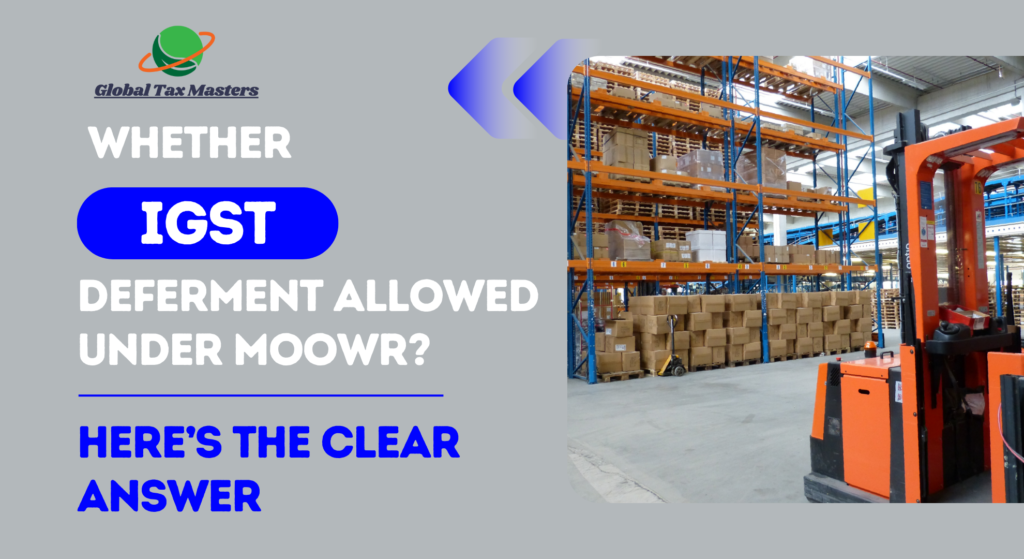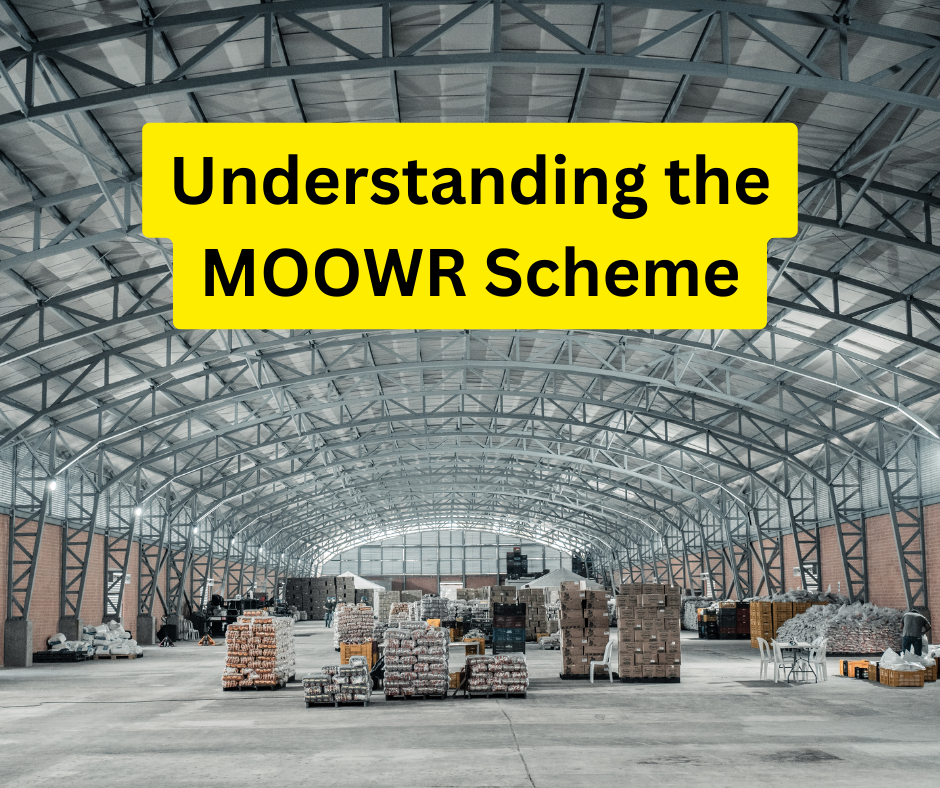IGST Deferment Under MOOWR – Here’s What You Need to Know (2025)
IGST Deferment Under MOOWR – Is It Still Allowed? One of the most important benefits of the MOOWR Scheme (Manufacture and Other Operations in Warehouse Regulations, 2019) is the duty deferment offered to manufacturers who import goods into India. At Global Tax Masters, we regularly get asked by clients: 👉 “Whether IGST deferment is allowed under MOOWR?”👉 “Has the IGST benefit been withdrawn under MOOWR?” Let us give you the correct legal picture, based on current law and practical application. Understanding IGST in MOOWR Under the MOOWR scheme, manufacturers can import capital goods and raw materials without paying Basic Customs Duty (BCD), IGST, and other duties at the time of import. This means the payment of these duties is deferred until the goods are cleared for home consumption. This IGST deferment under MOOWR is a key cash flow advantage. It allows companies to bring in capital equipment and inputs for production without the burden of immediate tax outgo. What Is Section 65A of the Customs Act? In 2022, Section 65A was inserted into the Customs Act, 1962 through the Finance Act. This provision empowers the Government to issue notifications to restrict or withdraw IGST deferment on warehoused goods under specific conditions. This raised a question in the industry — “Has IGST benefit been withdrawn for MOOWR units?” The answer is no. While the law allows such restriction, no notification under Section 65A has been issued by the Government so far. Current Legal Status – IGST and MOOWR As of today: IGST under MOOWR continues to be deferred at the time of import. There is no notification under Section 65A restricting IGST deferment for MOOWR units. Manufacturers can import machinery and raw materials without paying IGST upfront, and duty liability will arise only when goods are cleared from the bonded warehouse. So, to answer the question:“Whether IGST deferment allowed under MOOWR?”✅ Yes, it is still fully allowed under the current legal framework. Why This Matters The continuation of IGST deferment under MOOWR is a critical benefit for Indian manufacturers. By deferring IGST, businesses reduce working capital blockage and free up cash for operations and expansion. Unless and until the Government issues a formal notification under Section 65A, the IGST benefit under MOOWR is intact and available to all registered units. Final Word from Global Tax Masters At Global Tax Masters, we have supported over 200 clients in leveraging the MOOWR scheme for customs duty savings and compliance management. We monitor regulatory changes closely and ensure that our clients stay ahead of any policy developments. If you’re planning capital investments or considering MOOWR registration, remember: ✅ IGST in MOOWR is currently fully deferred✅ No notification under Section 65A has been issued✅ You can confidently plan imports without worrying about IGST outflow Still unsure about IGST and MOOWR?Connect with Global Tax Masters – India’s leading consultants for MOOWR registrations, duty optimization, and end-to-end import-export compliance.
IGST Deferment Under MOOWR – Here’s What You Need to Know (2025) Read More »




